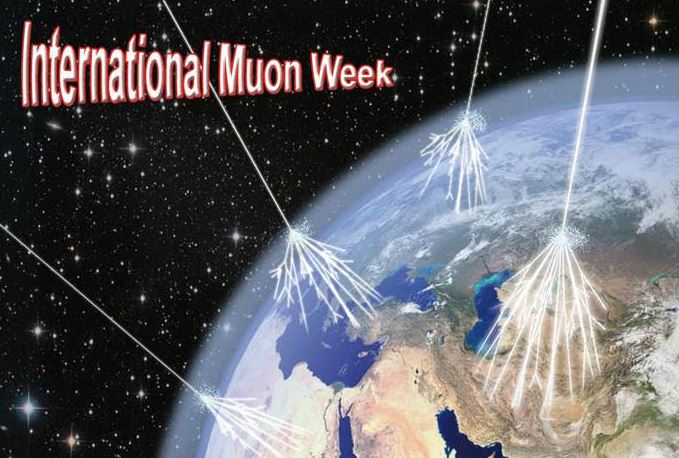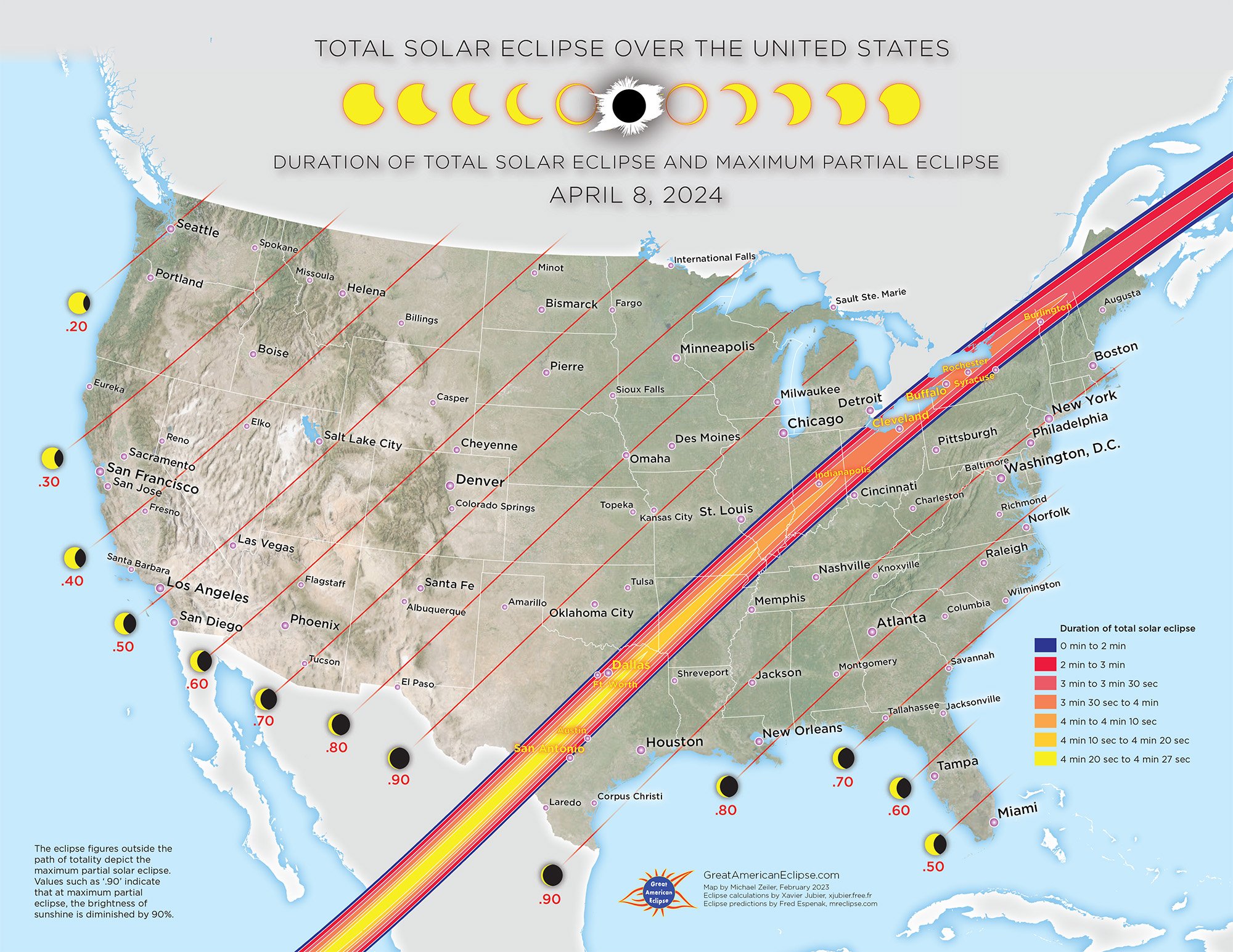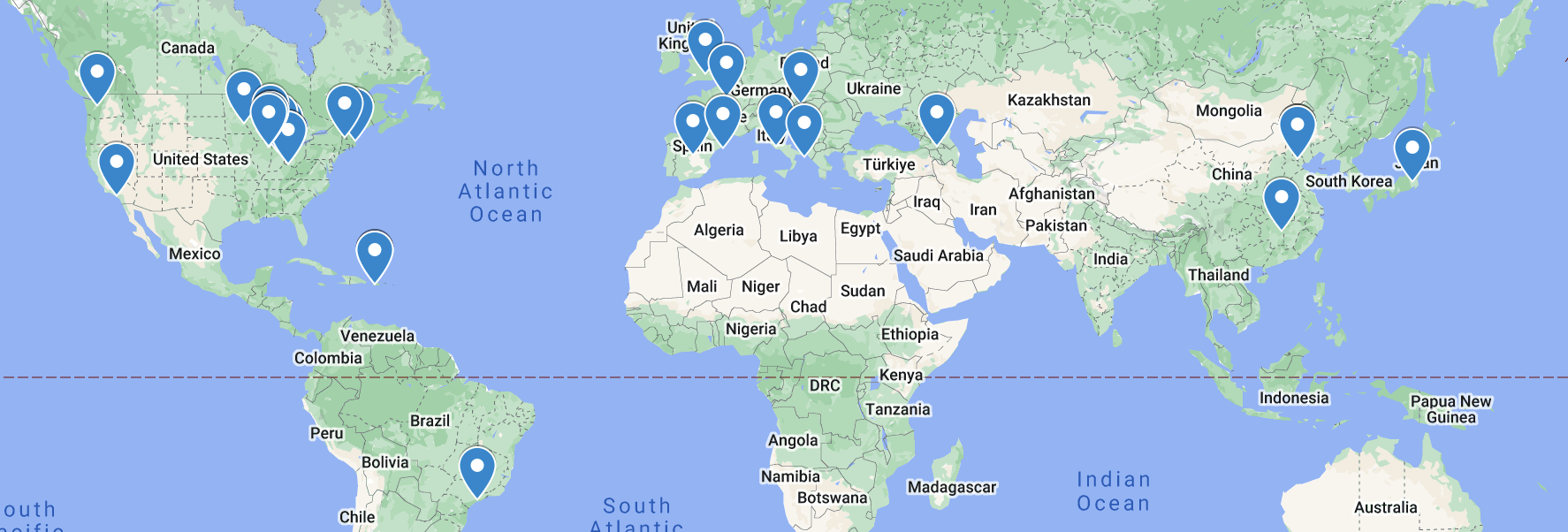International Muon Week 2024
International Muon Week(s) - Muon Flux Study
April 1-12, 2024

Is the cosmic ray flux the same all over the world?
Even during a Solar Eclipse?

REGISTRATION:
To register, please fill out the short form below. From the registration information, we will create an international map showing the locations of participating sites.
Register Here: Register

GOAL:
Our goal is to measure the muon flux around the world at the same time. As an additional challenge, we've chosen the dates to overlap with the a total solar eclipse in North America on April 8, 2024. Participants in North America can compare their muon rates during the eclipse with muon rates at other times. Participants located elsewhere can also measure normal muon rates and serve as a control during the eclipse times.
We know that the Sun is not a large source of cosmic rays at energies (> 20 GeV) that produce muons for us to detect on the surface of the Earth. We might produce a better upper limit of cosmic rays from the Sun by comparing rates during the day to those at night. Participants not near the eclipse path may also want to compare their muon fluxes in this alternate way.
You don't even need a cosmic ray detector to participate. QuarkNet teachers have uploaded previous data to e-Lab www.i2u2.org/elab/cosmic. Participants can run Data Flux studies as a guest. If you want to save results (beyond taking a photo of your plot) contact Mark (adams@fnal.gov) to set up an e-Lab account. Mark would also be happy to recommend which data to use.
DATA COLLECTION:
Leading up to April 8th, verify that your detector is operational by testing that your hardware is running and collecting data.
Collect as much flux data as you can during the period April 1-12, 2024. It is not necessary to collect data all the time. Some data are preferable to no data.
For our experiment procedure, we encourage similar experimental conditions. We ask all users to place their detector counters in a stacked configuration directly on top of each other with no distance between the counters. Please remember to update your CRMD geometry. If you have four counters, please set up the analysis to four-fold coincidence. if you use three counters, please up for three-fold coincidence.
NEED HELP?
- HELP DESK
For QuarkNet users, cosmic ray muon detector (CRMD) help is available in the Cosmic Ray e-Lab at the Help Desk (upper right of e-Lab web page...looks like a life ring).
https://www.i2u2.org/elab/cosmic/teacher/forum/HelpDeskRequest.php
- ZOOM SUPPORT SESSIONS
Zoom meeting link: https://us02web.zoom.us/j/2512248480- To set up your own Zoom support session, please contact Mark Adams (adams@fnal.gov), or attend this randomly scheduled help session:
- March 12 at 4PM CT (3PM ET, 5PMT, 6PM PT)
- To set up your own Zoom support session, please contact Mark Adams (adams@fnal.gov), or attend this randomly scheduled help session:
DATA ANALYSIS & FINAL REPORT
Make a flux plot for your entire data set you collected using an analysis tool of your choice. The Cosmic Ray e-Lab will simplify building a flux plot, then you can capture the plot URL to share with others. We suggest you prepare a one-page PDF report of your results. Include the names of the sites, plot pictures, and any discussion or conclusions from your collaboration. Please email the final report to adams@fnal.gov.
For Cosmic Ray e-Lab users: At the end of the week, upload your data to the Cosmic Ray e-Lab (www.i2u2.org/elab/cosmic), run a flux analysis on the week's data and save the plot. go to "View Plots" and open your saved flux plot, then capture the URL. Submit it through the submit flux plot link above.
If you need a Cosmic Ray e-Lab account, follow the instructions on this page (https://www.i2u2.org/elab/teacher.html).
STUDENT INTERACTIONS
We encourage you to have students ask questions of other students regarding the data. We can schedule a video meeting with a moderator at Fermilab during the week following International Muon Week. If you can participate only for part of the week, even a day, we encourage you to do so, and to submit your results.
IMW TEAM
Mark Adams (adams@fnal.gov)
Nicole Preiser (npreiser@burrburton.org)
